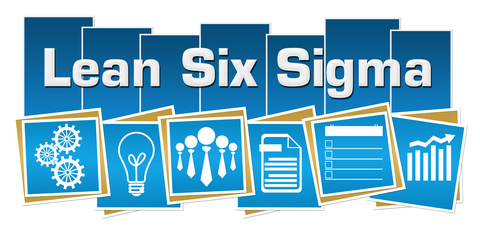At first glance it may seem un-Six Sigma-like to use art concepts in a discussion of Lean Six Sigma and the merger of two large financial institutions. But in fact, any serious approach to integrating two extremely complex organizations can benefit from thinking in terms of art as well as science. The successful change manager is an artist who chooses colors from the palates of both organizations (acquiror and acquiree) and from both change methodologies (Lean Six Sigma and traditional project management) to create a new, more brilliant result. Customer-centric integration is not simply painting by numbers. And achieving economies through consolidation is not always black and white. Optimizing company return and customer satisfaction is a matter of application, stroke by stroke. When the effort is complete, the shadings and colors blend into a true work of art.
Most financial institutions, especially banks, are organized around functional or silo views – looking inward at work being done and not outward at the customers and their desires. Departments and employees have narrowly defined responsibilities related to specific functions, channels or products, such as accounting, consumer, mortgage, technology or human resources. These organizations’ careful control of each department’s costs often is at the expense of customer satisfaction. It is not unusual for customer needs to fall between the cracks because no person in the company owns the process of satisfying the customer.
The reality of this paradigm – that it looks at success within a function or silo and not from the viewpoint of the customer – is multiplied many times during the execution of a large-scale merger. To avoid these problems, Lean Six Sigma adopts the view that businesses are comprised of processes that start with customer needs and should end with delighted customers using the product or service. It is a given that each major process is a value stream. The process and customer viewpoint of the value stream have a profound impact on how an organization operates and how work gets done. This is especially true when change managers execute the tasks required to successfully merge two organizations – especially two financial institutions.
Lean Six Sigma Success Factors
So there are three principles to be considered when executing an integration or merger with Lean Six Sigma as opposed to a traditional project management approach. Thee principles can be referred to as the Lean Six Sigma success factors.
Success Factor No. 1 is simply customer focus. Lean Six Sigma make the customer experience a key component of the target environment. Lean Six Sigma methodologies require that management’s knowledge of customer desires is based on real data and careful assessment. Without this discipline, change managers often use conjecture, assumptions and corporate myths about what customers want. With Lean Six Sigma, processes between combined entities are designed and executed to fulfill customer requirements and are not based on hitting arbitrary dates or cost-cutting goals. In this way the integration approach implements a multi-faceted, ongoing voice of the customer effort, using customer-focused data to manage the integration in the short term and the combined entities in the long term.
Success Factor No. 2 is to execute the integration in a process-focused manner. Too often, integrations are seen as taking one function or organizational structure from Bank A and inserting it into Bank B – with the result being measured in terms of which technology wins over another and the size of the reduction in headcount. Of course, a single technology must be decided on and some jobs are likely to be lost. But these decisions should be made within the framework of mapped processes supporting the newly combined company’s business and customer strategies. This can be accomplished by incorporating into the assessment phase of the integration plan an understanding of how and why work gets done. It also is valuable to identify critical customer contact points and processes that across organizational boundaries. These are the places with the greatest potential for the customer to get lost in the cracks. During a merger, when processes are being blended and restructured, the risk is greatly multiplied. Looking at a process from end-to-end is critical for success. Some merger teams even create a position of customer advocate, who is responsible for looking at all activities from a process perspective. Of course, that person’s efforts are in conjunction with traditional work groups responsible for functionality.
Success Factor No. 3 is the whole construct of using data and establishing measurement/reporting during the merger activities. Historically, an executive team running an integration will be concerned first with technology, and will assess risk in terms of key performance indicators. The technology will be stress-tested. However, it also is necessary to do the same for the non-technology aspects of a process, and for the people components as well. Key performance indicators (KPIs) usually track results in terms of numbers and goals meaningful to internal managers. But, it also is imperative to be able to predict the impact on customers and translate the “techno speak” and managerial numbers into critical-to-quality (CTQ) metrics that the customer cares about. Ultimately, the goal is to retain and grow the customer base through the merger.
Based on the three key success factors, the traditional merger approach can be compared with one that is influenced by the principles of Lean Six Sigma. Good project execution and Lean Six Sigma principles go hand in hand. Although data is always an important consideration, in the end, understanding the culture of the two organizations and the sophistication of the change management infrastructure will help determine where and when Lean Six Sigma best add value to the integration effort. That is the art of applying Lean Six Sigma. The chart below compares the purely traditional integration approach to that same integration with Lean Six Sigma methodologies.
| Traditional | Lean Six Sigma |
| Plan based on business requirements | Plans based on voice of the customer |
| Technology driven | People/process/technology driven |
| KPI metrics determine success | CTQ metrics determine success |
| Mapping/gapping of functional/organizational alignment | Mapping/gapping of value stream processes |
| Select one target environment | Select best practices |
| Audit against project plans | Audit against customer experience |
In addition to integrating Lean Six Sigma principles into a traditional merger approach, there also is great value in aligning integration project deliverables into a Lean Six Sigma construct under the DMAIC (Define, Measure, Analyze, Improve, Control) process. Once again, it is a marriage of the Lean Six Sigma and project execution that has the greatest impact. It is still necessary to have a project office, to do field-to-field mapping, to execute branding and to consolidate physical sites. The difference is that these activities are now done to enable a customer- and process-focused effort.
| Planning, Organization and Assessment (Define/Measure/Analyze) |
Design and Early Implementation (Analyze/Improve) |
Implementation (Improve/Control) |
| Project management office | Staff planning | Customer and associate communications |
| Work planning, issue tracking, gap analysis, other management information systems | Site selection | Physical site consolidations |
| Workflow and organization analysis | Field-to-field mapping | Testing (all areas) |
| Assessment surveys and analysis | Detailed consolidation plans (site/function) | Training/procedure documentation and delivery |
| Scope definitions and decisions | Detailed conversion plans and schedules (systems) | Equipment installations |
| Budget, staffing and timeline plans | Detailed conversion plans and schedules (systems) | Quality assurance/rapid response teams |
| Customer and associate communications | Detailed implementation approaches | Field support/conversion guides |
| Product, systems and functional mapping | Coding/technical testing | Control rooms/command centers |
| Integration approach development | Early implementation | Dress rehearsals |
| Early implementation decision | Systems conversions | |
| Post-implementation support |
Many a traditional project manager or change manager may at first be a little uncomfortable by the introduction of unfamiliar Lean Six Sigma principles and tools. Customer-focused, data-driven decisions for best practices, and target environments defined by processes and not organizational charts may not be as simple as choosing a technology and combining a workforce. But, the picture of a combined organization with costs reduced furthest from the customer experience, processes that become synergistic, increased quality and speed of execution, and healthy customer growth will be seen as a great work of art by all.






0 comments:
Post a Comment